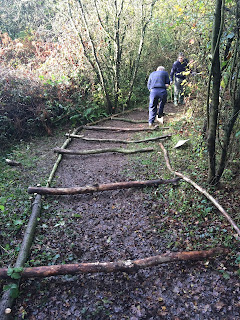A sunny, frosty morning is what winter should be like, so seeing this sunbeam lighting up a patch of frosted grass I was drawn out.
The little frost crystals seem to cluster at the tip of the grass blades. Now why is that?
In amongst the grass are old leaves from last year.
A hazel leaf edged with white
But not all leaves are dead.
The veins on these nettle leaves are left green while the rest is frosted.
On a flatter bramble leaf there is an even scattering of frost granules.
And primrose leaves are outlined with sugary icing.
A promise of spring flowers to come.





















































